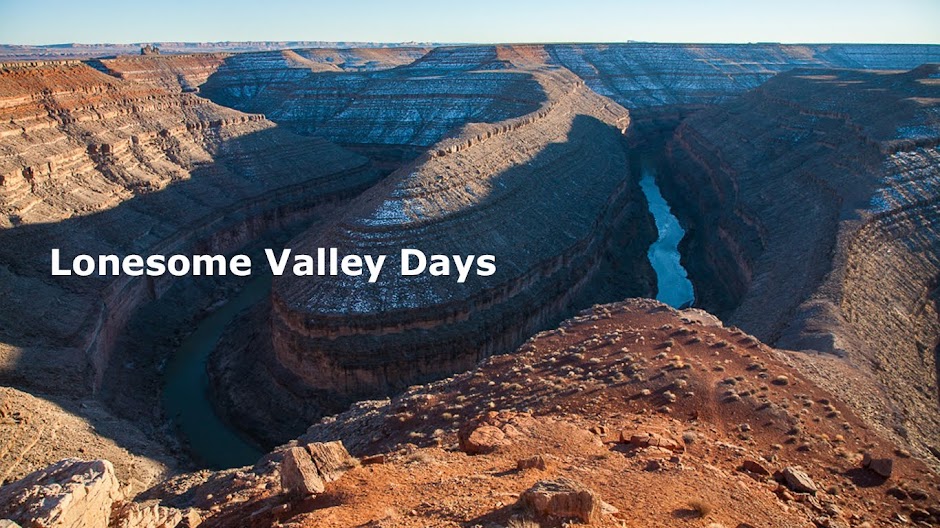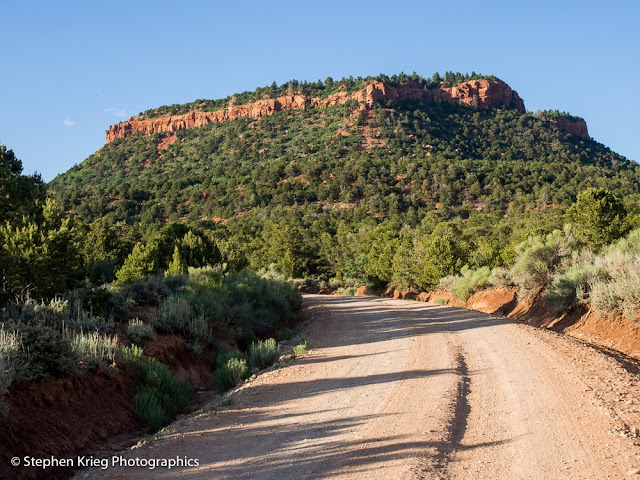 |
| Monsoon thundershower waterfalls into White Canyon, near Sipapu Natural Bridge. |
 | |
| Rain coming down by the buckets! It won't last long. |
 |
| A waterfall in two parts! |
A heavy rain in the high desert starts running off fast. Especially when large portions of the watershed are bare sandstone slickrock. It's going to go downhill of course, and channeled into grooves and washes in the rock. To pour off of any cliff that's in the way.
Zooming in on one canyon rim waterfall, I was surprised to see that it had two parts to it. The surface tension of the rock made some of it run down the cliff face. But when the force of the water became too much, the rest was vaulted off into space from the very rim. I'd never seen--or at least noticed--that before.
 | |
| Rain, rain, rain. Down the canyon walls of Cedar Mesa Sandstone. |
So I drove around the loop a second time (it's one way) to see what was going on in the rainy side of the park.
 |
| Notice the difference in turbidity (how muddy different flows are). |
It had backed off some. Enough that I could get out and photograph instead of staying huddled in my vehicle and shooting through the downpouring curtain of water.
It was interesting to see how clear some of the waterfalls were, and how muddy others were. It all depends on what part of the site it's draining: bare rock, or soil.
 |
| Visitors taking in the temporary spectacle. Almost an inch of rain fell in about an hour. |
Photo location: Natural Bridges National Monument, southeast Utah.
© Copyright Stephen J. Krieg













